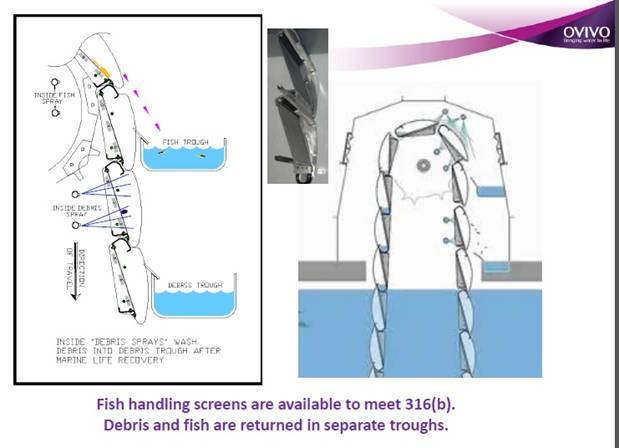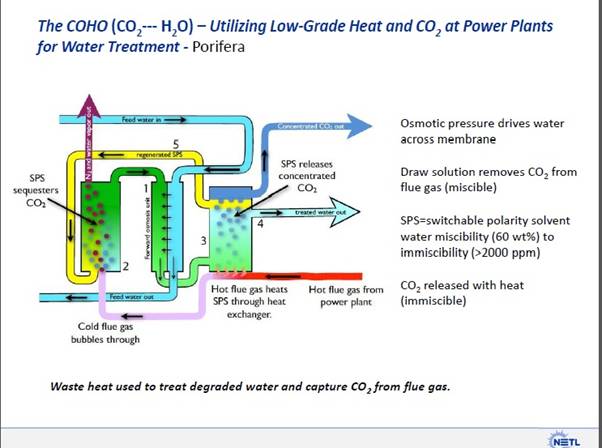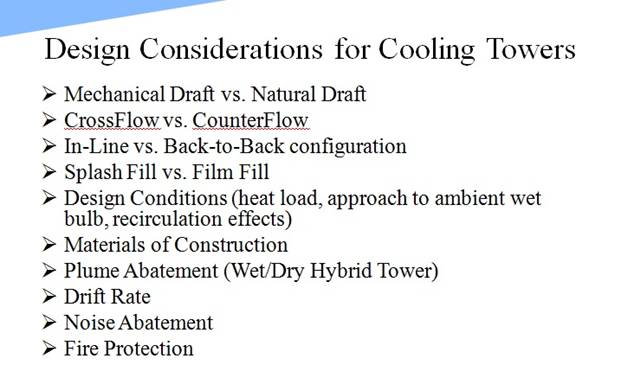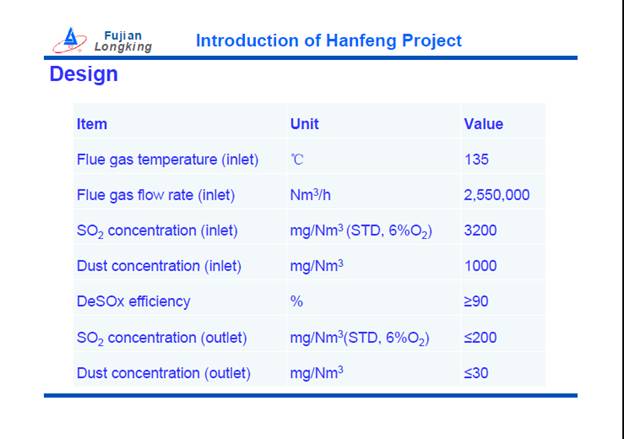
CDS vs. SDI vs. SDA in Dry Scrubber Hot Topic Discussion Yesterday
The Dry Scrubber Hot Topic Hour Webinar on October 23, 2014 contained valuable
decisive classifications as well as little known facts and insights. This
positive result was the work of some very experienced and knowledgeable
individuals.
The
Dry Scrubbing - Continuous Analyses website
is free of charge and is also part of
Power Plant Systems and Components, which is free to power plants around the
world. The goal is to make the McIlvaine website the default starting
point for owners and operators of air pollution control equipment throughout the
world. About 20 percent of the session was devoted to China.
Paul Farber, who was the keynote
presenter will be in Thailand conducting a training course early next year and
will make sure that his students are aware of this site.
KC Cottrell
as a presenter talked about installations in Taiwan, Korea, and China.
Successes on the hybrid SDA-DSI are the work of
B&W in the U.S. and
GEA in Europe.
No one area of the world has a monopoly on dry scrubber knowledge. The reality
is that China, with hundreds of dry scrubber installations, has accumulated
knowledge which puts it on equal footing with the U.S., European, and Japanese
companies which originally brought the dry scrubbing technology to China.
Regarding the development of the expertise,
Joe Riley of
BoldEco cited some of the
early European work by Solvay
and the BoldEco European partner as the first sodium dry scrubber installation.
The first power installation known to the McIlvaine Company came as a result of
a bid request by a western U.S. utility. They wanted an alternative to the wet
limestone approach and were willing to fund three pilot plants using spray
driers. Niro teamed with
Joy and became the early
developer of the spray drier technology. In recent years, B&W has acquired this
technology.
Mike Widico
and Kevin Cosman of KC Cottrell
presented a number of positive features about their design. It is compact and
even with the cyclone can be fitted into most power plants. Because of the
cyclone to capture the calcium sulfate, the downstream precipitator is not
contaminated by large quantities of high resistivity dust.

Paul Farber provided a valuable overview with decisive classification of the
alternatives. Each of the three options has some advantages and some
disadvantages. Spray Dryers are less costly than circulating dry scrubbers but
have more limited SO2 removal capability. Paul was asked about the
potential of the hybrid DSI–SDA to improve this capability. He is of the opinion
that this combination will expand the range for SDA.

Next came a discussion of the Dry Scrubber Users Conference with
Shawn Veurink of
RPM who is the treasurer of
the organization. The meeting last month combined topical discussions, vendor
displays and plant presentations such as
Sherco 3 Plant Report. Larry
Glass, Engineer Sherburne County Generating Plant, combined topical
discussions, vendor exhibits and papers such as these.
Michael Polachek,
- Technical Manager PSEG Fossil
Dry Scrubber Layup Strategies
Craig Henry
JW Turk Plant Report
Darren Farnworth, (Regional
Sales Mgr., SST
Enviro Corp Solutions)
Significant Improvements Made in Lime Slurry Preparation for Use in SO2
Jeff Lester
Comanche Station Plant Report
John Kersch (Maintenance
Manager, NAES Corp. Logan Generating Company)
Logan Generating Plant Scrubber Optimization Project
Jim Butz (VP
Product Management, Novinda Corporation)
BOP Impact of Amended Silicates for Mercury Control
Steve Rudolph
and Michael Polachek
PSEG Mercer & Hudson Plant Report
The meeting next September will be in Rapid City, SD where the attendees will be
dining with the presidents on Mt. Rushmore.
Shawn also provided a set of power points on
RPM Solutions activities. He
was asked about methods to ensure the operability of the rotary atomizers.
RPM has a monitoring program which includes real time monitoring and data
collection.

Jianchun Wang
of Lonjing Environment Technology
provided details on the Hangfeng Project. The installation has exceeded the
guarantee limits. SO2 removal is 93 percent.

An earlier paper by
Longking dealing with various
valuable end products produced from CDS calcium sulfate was also quickly
reviewed. The Chinese are ahead of the rest of the world in this
area. This paper is being uploaded to the website.
ITPE
in China has licensed MET in
the U.S. to supply its circulating dry scrubber with two humidification stages.
Here is the paper already on the site.
Over 140 installations of MET/ITPE dry scrubber
Joe Riley
of BoldEco provided insights
into the use of spray cooling and size reduction of reagents and how they are
enabling hazardous waste incinerator operators to reach SO2 emissions
as low as 1 or 2 ppm.
The information on the hybrid SDA-DSI was posted to the site earlier. It covers
work of B&W in the U.S. and GEA in Europe. GEA acquired Niro some years
ago and is a major worldwide spray drier supplier.
Boosting SDA efficiency with DSI at Wygen 3
Individual presentations follow:
Dry Scrubbing Webinar - Hot Topic Hour
October 23, 2014
The Dry Scrubber Hot Topic Hour Webinar on October 23, 2014 contained valuable
decisive classifications as well as little known facts and insights. This
positive result was the work of some very experienced and knowledgeable
individuals.
Revision Date:
10/23/2014
Tags:
221112 - Fossil Fuel
化石燃料,
KC Cottrell, BoldEco Environment, Longking, P. Farber & Associates, LLC,
McIlvaine, Dry FGD, Circulating Dry Scrubber, Spray Dryer, Dry Sorbent
Injection, Incinerator, Byproduct
Jianchun Wang of Lonjing Environment Technology provided details on the Hangfeng
Project. The installation has exceeded the guarantee limits. SO2 removal is 93
percent.
Revision Date:
10/23/2014
Tags:
221112 - Fossil Fuel
化石燃料,
Longking, Dry FGD, Circulating Dry Scrubber, Incinerator
McIlvaine Agenda by Bob McIlvaine - Hot
Topic Hour October 23, 2014
CDS vs. SDI vs. SDA in Dry Scrubber
Revision Date:
10/23/2014
Tags:
221112 - Fossil Fuel
化石燃料,
McIlvaine, Dry FGD, Circulating Dry Scrubber, Spray Dryer, Dry Sorbent
Injection, Incinerator
Paul Farber provided a valuable overview with decisive classification of the
alternatives. Each of the three options has some advantages and some
disadvantages.
Revision Date:
10/23/2014
Tags:
221112 - Fossil Fuel
化石燃料,
P. Farber & Associates, LLC, Dry FGD, Circulating Dry Scrubber, Spray Dryer, Dry
Sorbent Injection
Regarding the development of the expertise, Joe Riley of BoldEco cited some of
the early European work by Solvay and the BoldEco European partner as the first
sodium dry scrubber installation.
Revision Date:
10/23/2014
Tags:
221112 - Fossil Fuel
化石燃料,
BoldEco Environment, Dry FGD, Circulating Dry Scrubber, Spray Dryer, Dry Sorbent
Injection, Incinerator
Mike Widico and Kevin Cosman of KC Cottrell presented a number of positive
features about their design. It is compact and even with the cyclone can be
fitted into most power plants. Because of the cyclone to capture the calcium
sulfate, the downstream precipitator is not contaminated by large quantities of
high resistivity dust.
Revision Date:
10/23/2014
Tags:
221112 - Fossil Fuel
化石燃料,
KC Cottrell, Dry FGD, Circulating Dry Scrubber, Incinerator